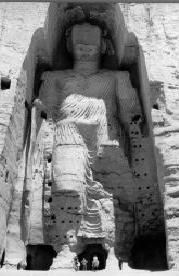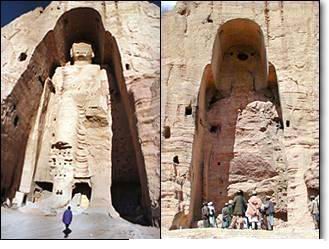
One of many precious wooden image from Nuristan
The Taliban's this action wasn't anthing new to the people of Afghanistan because the ministry of Vice and Virtue were those who were overseeing the destruction of the artifacts. No wonder that the ministry also enforces adherence to many facets of the Taliban's strichet interpretation of Islam. The best examples were as follow: 








